It Takes A Village - From Baroque to Runway - Costume Design by Leslie
Leslie Cook-Day, Associate Professor of Costume Design at Longwood University, loves a show like this that is growing and developing daily. Leslie’s inspiration runs from the 17th century to Baroque garbs of the time all the way to modern touches to bring this work to our current time.
“There's so much scope for creativity and imagination in the process. For a designer, that is like sitting down to a really satisfying meal. It just feeds you creatively.”
What is your inspiration for costumes for Julie, Monster?
It's such a rich story with so much resonance in the current moment, that it's been important to think about how to blend the 17th century roots with the modern day visually. To do this I've collected images and information about Julie herself, paired with runway looks that have historical fashion features, and looked at 17th century portraiture and extant artifacts to find a mix that can really live in both worlds, without feeling like a pure period piece.
With a performance that crosses genres and time periods, how do you think of costumes that ‘do everything?’
The key thing is to achieve balance. It can't be too much one or the other; there can be statement pieces or details that fit binary visuals, but somewhere else on the costume we have to be showing the opposite as well. So a traditionally masculine cut of garment, might be given a more traditionally feminine detail, or a modern suit might have very 17th century-style lace trim added. Above all, it can't simply be eclectic, it needs to have cohesion, and we're trying to achieve that through the purposeful use of color and a real stripping back to essentials. I'm constantly asking myself "What elements are truly necessary to say what we're trying to say?" And then getting rid of everything that doesn't serve that.
Julie, Monster has so many different characters, all with unique personalities. How do you think about focus when everyone can be so over the top?
Focus is all about choice, where you direct the audience's gaze and attention. It is a particular challenge in a show that is saying so many different things, but it's a fun challenge and it really gives an opportunity to decide what can best make a statement. How does a color, a texture, an accessory point to the one overwhelming thing we want the audience to understand about someone? We all have a shared visual vocabulary, whether we realize it or not, so speaking that language becomes my conversation with the audience. The great thing about Theatre, and costuming in particular, is it's an ever-evolving process. We might look at many different options to discover the one right combination that says just enough, and not too much.
How do you put those looks together on community theater budgets?
That is the biggest challenge there is, especially for a show that is absolutely new and which has a large cast. There's always the show as you would imagine it without any restrictions, and then you think about how to pick just a few of those elements that will speak loudest to the audience. It's all about editing and being adaptable. Find what can provide a really good base, and then add details that are specific. It's more work, but you end up with a really customized look that hopefully tells the story clearly and boldly.
